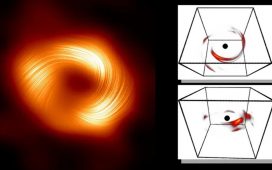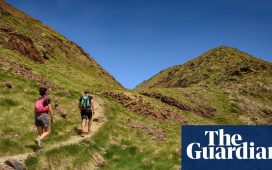Two Nasa astronauts have embarked on the first all-female space walk in a historic first.
Christina Koch and Jessica Meir floated feet-first out of the International Space Station’s (ISS) Quest airlock on Friday lunchtime UK time, tasked with replacing a failed power control unit.
The spacewalk, known as an extra-vehicular activity (EVA) in astronaut jargon, took place seven months after the original planned date for an all-female outing, which had to be scrapped because the ISS had only one medium-sized spacesuit on board. The agency sent up a second medium spacesuit in October.
“I think it’s important because of the historical nature of what we’re doing,” Koch said ahead of the spacewalk. “In the past, women haven’t always been at the table. It’s wonderful to be contributing to the space program at a time when all contributions are being accepted, when everyone has a role. That can lead in turn to increased chance for success.”
Koch, who has been on the ISS since March, was first out the hatch, followed by Meir, carrying a tool bag. During the five-and-a-half-hour spacewalk, the astronauts remained attached to handrails on the exterior of the ISS using harnesses and pairs of metal carabiners. These are sequentially clipped and unclipped to ensure that the astronauts cannot float off into space.

Video footage from the astronauts’ helmet cameras, as they dangled 260 miles above Earth, provided a live stream of the painstaking operation to carry the new hardware, install it and then return the faulty battery to the airlock for a postmortem back on Earth into why it failed.
Tracy Caldwell Dyson, a Nasa astronaut who completed three spacewalks as part of the Expedition 24 crew on the ISS in 2010, said: “This is significant … As much as it’s worth celebrating, many of us are looking forward to it just being normal.”
During the spacewalk, the coordinator on the ground was Stephanie Wilson, also an astronaut.
Koch, 40, is due to remain on the ISS until February, bringing her total time in space to 328 days, the longest single spaceflight by a woman and just short of Scott Kelly’s 340-day record. Researchers are collecting extensive biomedical data on the impact of spaceflight on Koch’s body.
The majority of data available is on male astronauts, but there is some evidence that there are sex differences in responses to a space environment. One study found that women are more likely than men to experience faintness as a result of “orthostatic hypotension”, a cardiovascular issue. Men appear more prone to vision changes caused by spaceflight associated neuro-ocular syndrome (Sans).
Previously, 14 women and 213 men have carried out spacewalks. The first woman was the Russian cosmonaut Svetlana Savitskaya, who went outside the USSR’s Salyut 7 space station in 1984.
On Tuesday, Nasa unveiled the prototype for a new spacesuit that could be worn by the next crew, expected to include a woman, to land on the moon. The suit is designed to give a customised fit to the individual astronaut, whatever their shape or size.








